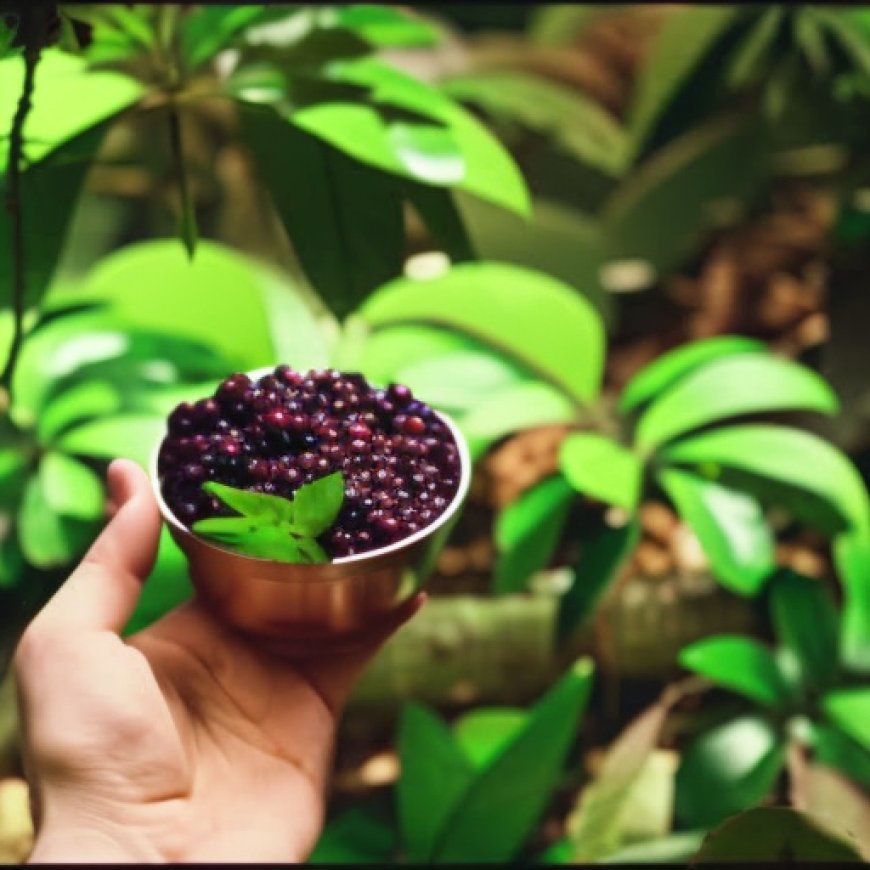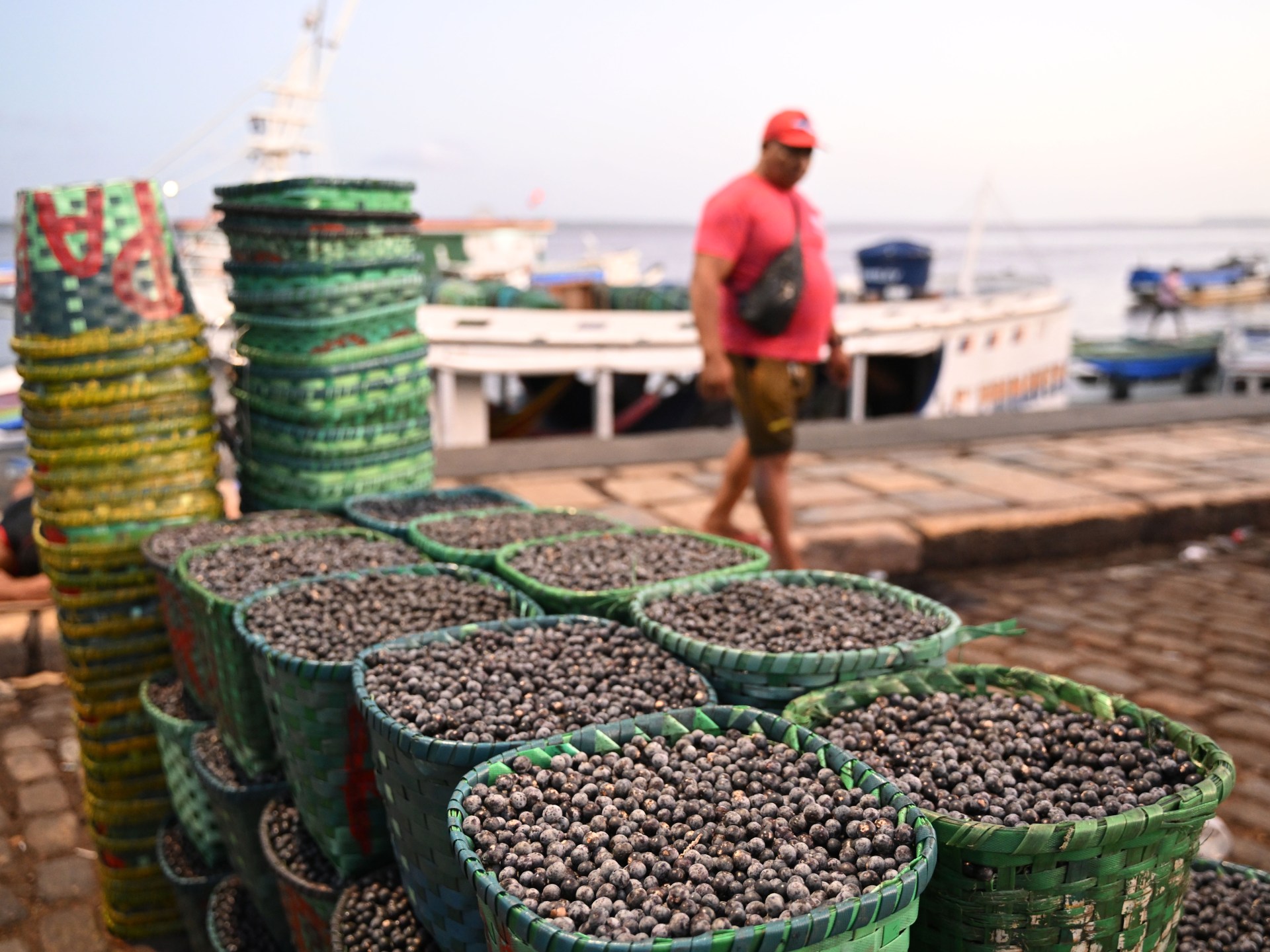Photos: Acai berry craze boosts incomes in the Amazon, but at a cost
Acai berry craze boosts incomes in the Brazilian Amazon, but at a cost Al Jazeera English


The Impact of Acai on the Brazilian Amazon

In the sweltering heat of the Brazilian Amazon, Jose Diogo, a farmer from a remote community, harvests a cluster of black berries known as acai. Acai has gained international fame as a trendy “superfood” due to its rich nutritional and antioxidant properties. This has led to an economic boom for traditional farmers in the Amazon region, presenting an opportunity for “green development” without causing harm to the rainforest.
However, the increasing demand for acai is also posing a threat to the Amazon’s biodiversity. The expansion of single-crop fields of acai palms is leading to a loss of other plant species in the region. Biologist Madson Freitas refers to this phenomenon as “acai-ification” and warns that it results in a significant reduction in the diversity of native species.
Positive Economic Impact
Despite the environmental concerns, acai cultivation has brought significant economic benefits to farmers like Jose Diogo. The income generated from acai harvesting has allowed him to improve his living conditions and build a brick house. On a good day, he can fill 25 baskets of acai berries, earning between 300 and 625 reis ($60 to $128).
The harvested berries are transported by boat to Belem, the state capital, where they are quickly sold in the market before spoiling. Brazilian exports of acai and its derivatives have skyrocketed over the past two decades, reaching over 15,000 tonnes in 2021. The state of Para, which is responsible for 90 percent of Brazil’s acai production, generated more than $1 billion for its economy in 2021.
Environmental Concerns
While acai cultivation has brought economic prosperity, it has also raised concerns about the loss of biodiversity and the negative impact on acai itself. The expansion of acai palms leads to a decrease in pollinators such as bees, ants, and wasps, resulting in reduced productivity. Additionally, longer dry periods caused by climate change are affecting acai growth, as it thrives in land that floods during the rainy season.
Sustainable Development Goals (SDGs)
- SDG 15: Life on Land – The expansion of acai cultivation threatens the biodiversity of the Amazon rainforest, highlighting the need for stronger conservation laws and incentives for farmers to preserve the ecosystem.
- SDG 13: Climate Action – The Amazon rainforest plays a crucial role in mitigating climate change through its carbon-absorbing trees. Preserving the rainforest and supporting communities like quilombos can contribute to global climate action.
Preserving the Amazon’s Environmental Service
Salomao Santos, a local leader in Igarape Sao Joao, emphasizes the importance of preserving the Amazon and its environmental service. He calls for compensation for quilombo residents and others who actively protect the rainforest. Recognizing the historical commodity booms and busts, Santos highlights the need for sustainable practices that go beyond relying on a single species like acai.
SDGs, Targets, and Indicators
| SDGs | Targets | Indicators |
|---|---|---|
| SDG 1: No Poverty | 1.4: By 2030, ensure that all men and women, in particular, the poor and the vulnerable, have equal rights to economic resources, as well as access to basic services, ownership, and control over land and other forms of property, inheritance, natural resources, appropriate new technology, and financial services, including microfinance. | No specific indicators mentioned in the article. |
| SDG 2: Zero Hunger | 2.4: By 2030, ensure sustainable food production systems and implement resilient agricultural practices that increase productivity and production, that help maintain ecosystems, that strengthen capacity for adaptation to climate change, extreme weather, drought, flooding, and other disasters, and that progressively improve land and soil quality. | No specific indicators mentioned in the article. |
| SDG 3: Good Health and Well-being | 3.4: By 2030, reduce by one-third premature mortality from non-communicable diseases through prevention and treatment and promote mental health and well-being. | No specific indicators mentioned in the article. |
| SDG 8: Decent Work and Economic Growth | 8.5: By 2030, achieve full and productive employment and decent work for all women and men, including for young people and persons with disabilities, and equal pay for work of equal value. | No specific indicators mentioned in the article. |
| SDG 12: Responsible Consumption and Production | 12.2: By 2030, achieve the sustainable management and efficient use of natural resources. | No specific indicators mentioned in the article. |
| SDG 13: Climate Action | 13.3: Improve education, awareness-raising, and human and institutional capacity on climate change mitigation, adaptation, impact reduction, and early warning. | No specific indicators mentioned in the article. |
| SDG 15: Life on Land | 15.2: By 2020, promote the implementation of sustainable management of all types of forests, halt deforestation, restore degraded forests, and substantially increase afforestation and reforestation globally. | No specific indicators mentioned in the article. |
1. Which SDGs are addressed or connected to the issues highlighted in the article?
- SDG 1: No Poverty
- SDG 2: Zero Hunger
- SDG 3: Good Health and Well-being
- SDG 8: Decent Work and Economic Growth
- SDG 12: Responsible Consumption and Production
- SDG 13: Climate Action
- SDG 15: Life on Land
2. What specific targets under those SDGs can be identified based on the article’s content?
- Target 1.4: By 2030, ensure that all men and women, in particular, the poor and the vulnerable, have equal rights to economic resources, as well as access to basic services, ownership, and control over land and other forms of property, inheritance, natural resources, appropriate new technology, and financial services, including microfinance.
- Target 2.4: By 2030, ensure sustainable food production systems and implement resilient agricultural practices that increase productivity and production, that help maintain ecosystems, that strengthen capacity for adaptation to climate change, extreme weather, drought, flooding, and other disasters, and that progressively improve land and soil quality.
- Target 3.4: By 2030, reduce by one-third premature mortality from non-communicable diseases through prevention and treatment and promote mental health and well-being.
- Target 8.5: By 2030, achieve full and productive employment and decent work for all women and men, including for young people and persons with disabilities, and equal pay for work of equal value.
- Target 12.2: By 2030, achieve the sustainable management and efficient use of natural resources.
- Target 13.3: Improve education, awareness-raising, and human and institutional capacity on climate change mitigation, adaptation, impact reduction, and early warning.
- Target 15.2: By 2020, promote the implementation of sustainable management of all types of forests, halt deforestation, restore degraded forests, and substantially increase afforestation and reforestation globally.
3. Are there any indicators mentioned or implied in the article that can be used to measure progress towards the identified targets?
No specific indicators are mentioned or implied in the article that can be used to measure progress towards the identified targets.
4. SDGs, Targets, and Indicators
| SDGs | Targets | Indicators |
|---|---|---|
| SDG 1: No Poverty | 1.4: By 2030, ensure that all men and women, in particular, the poor and the vulnerable, have equal rights to economic resources, as well as access to basic services, ownership, and control over land and other forms of property, inheritance, natural resources, appropriate new technology, and financial services, including microfinance. | No specific indicators mentioned in the article. |
| SDG 2: Zero Hunger | 2.4: By 2030, ensure sustainable food production systems and implement resilient agricultural practices that increase productivity and production, that help maintain ecosystems, that strengthen capacity for adaptation to climate change, extreme weather, drought, flooding, and other disasters, and that progressively improve land and soil quality. | No specific indicators mentioned in the article. |
| SDG 3: Good Health and Well-being | 3.4
Behold! This splendid article springs forth from the wellspring of knowledge, shaped by a wondrous proprietary AI technology that delved into a vast ocean of data, illuminating the path towards the Sustainable Development Goals. Remember that all rights are reserved by SDG Investors LLC, empowering us to champion progress together. Source: aljazeera.com
Join us, as fellow seekers of change, on a transformative journey at https://sdgtalks.ai/welcome, where you can become a member and actively contribute to shaping a brighter future.
|








